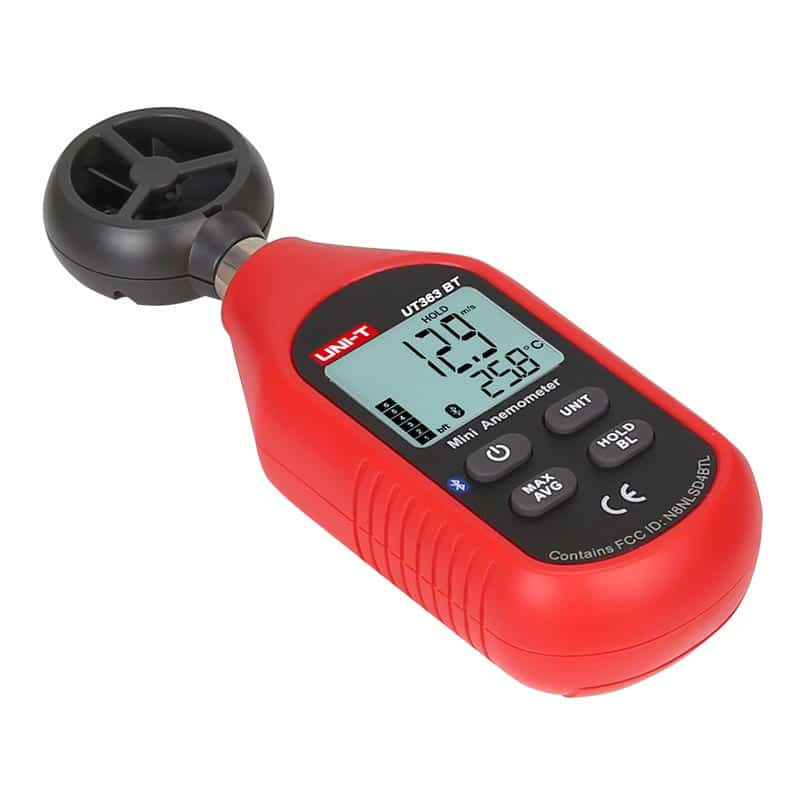Anemometers Introduced: Understanding Their Significance in Environmental Monitoring and Security Measures
The function of anemometers in environmental surveillance and safety and security steps is often taken too lightly, yet their relevance is obvious. From meteorology to aeronautics security, anemometers play a crucial function in supplying exact data that notifies decision-making procedures and enhances general safety.
Background of Anemometers
The advancement of anemometers can be traced back to the old human beings where primary wind determining gadgets were first used. These early wind dimension tools laid the foundation for the development of extra sophisticated anemometers over time. Among the earliest known anemometers was the hemispherical cup anemometer developed by Leon Battista Alberti in the 15th century. This design included 4 hemispherical cups that gathered wind power, supplying a measurement of its strength based on the rate of turning.
Over the years, innovations in technology led to the advancement of even more contemporary anemometers, consisting of ultrasonic anemometers and laser Doppler anemometers, supplying enhanced precision and performance in determining wind speed and direction. The background of anemometers showcases an exceptional journey of innovation and progress in the field of meteorology.
Kinds Of Anemometers
Throughout the area of weather forecasting, numerous types of anemometers have been developed to properly determine wind rate and direction. The most usual type is the mug anemometer, which contains 3 or 4 mugs placed on horizontal arms that turn with the wind. As the mugs rotate, the speed at which they revolve is directly proportional to the wind rate. One more extensively utilized kind is the vane anemometer, which features a tail or fin that straightens itself with the wind direction. This placement allows the device to establish the wind direction. Sonic anemometers use ultrasonic signals to gauge wind rate and direction precisely. They are frequently made use of in research applications due to their high accuracy. Hot-wire anemometers run based on the concept that the cooling impact of wind on a heated cable is proportional to the wind rate. These anemometers are suitable for gauging low wind rates with high accuracy. Each kind of anemometer has its toughness and is chosen based on the certain needs of the surveillance job handy.
Applications in Weather Forecasting
Having talked about the numerous kinds of anemometers made use of in weather forecasting for gauging wind speed and direction, it is vital to explore their practical applications in the field. Anemometers play a vital role in weather forecasting by supplying real-time and accurate data on wind conditions (anemometer). Meteorologists utilize anemometers to keep an eye on wind rate and instructions to anticipate climate patterns, issue cautions for severe weather events like tornadoes, tornados, and typhoons, and assess climatic problems for aeronautics security
In meteorology, anemometers aid in recognizing regional and regional wind patterns, which are vital for forecasting climate adjustments and determining climatic fads. These gadgets are likewise utilized in research to examine microclimates, urban heat islands, and air contamination diffusion. Furthermore, anemometers are utilized in agriculture to optimize crop management techniques, such as watering and chemical application, based on wind problems.
Relevance in Air Travel Security
An integral facet of making sure aeronautics safety hinges on the meticulous tracking of wind problems using anemometers. Anemometers play an important function in air travel by providing real-time information on wind rate and direction, helping pilots in making educated decisions during touchdown, flight, and take-off. Strong and unpredictable winds can significantly influence airplane procedures, making it important for aeronautics authorities look at this site to count on precise wind measurements to ensure the safety of passengers and crew.

In the dynamic environment of aeronautics, where even small modifications in wind speed and instructions can have extensive results, anemometers stand as vital tools for advertising safe and protected flight.
Function in Environmental Research Study
Exactly how do anemometers contribute to advancements in environmental research study? Anemometers play a crucial role in environmental research by offering crucial data on wind rate and direction. This details is vital for recognizing various atmospheric processes, such as air pollution dispersion, climate patterns, and climate change. By properly measuring wind characteristics, anemometers help researchers assess the activity of toxins airborne, evaluate the influence of industrial exhausts, and anticipate the spread of pollutants in the atmosphere.


Final Thought
In final thought, anemometers have played a critical function in environmental tracking and safety and security actions. Recognizing the value of anemometers is important for properly measuring wind rate and direction, which is essential for predicting weather condition patterns, ensuring risk-free air travel procedures, and conducting ecological studies.
One of the earliest known anemometers was the hemispherical cup anemometer developed by Leon Battista Alberti in the 15th century. Over the years, improvements in technology led to the advancement of even more contemporary anemometers, consisting of ultrasonic anemometers and laser Doppler anemometers, using enhanced accuracy and efficiency in determining wind speed and direction. Hot-wire anemometers operate reference based on the principle that the cooling result of wind on a warmed wire is proportional to the wind speed. Meteorologists utilize anemometers to monitor wind speed and instructions to forecast weather condition patterns, problem warnings for serious climate events like cyclones, hurricanes, and storms, and evaluate atmospheric conditions for air travel safety.
Understanding the importance of anemometers he said is crucial for properly gauging wind speed and direction, which is crucial for forecasting weather patterns, ensuring secure air travel operations, and conducting ecological research studies. (anemometer)